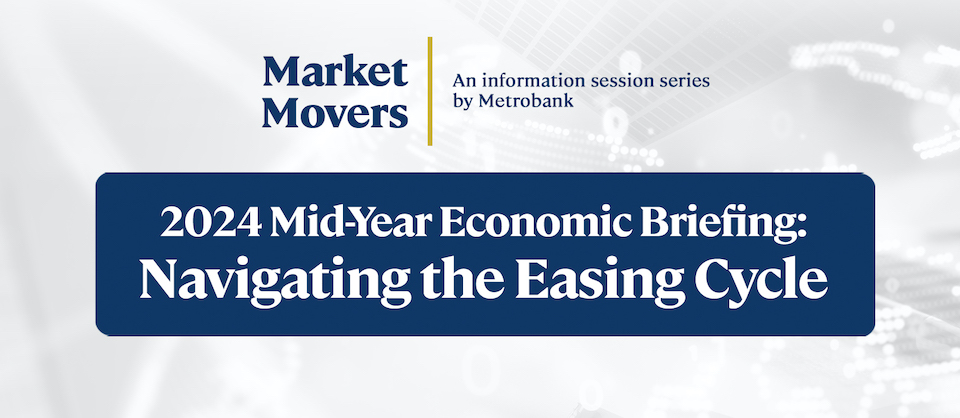




Quarterly Economic Growth Release: More BSP cuts to come
 DOWNLOAD
DOWNLOAD

Monthly Economic Update: Fed catches up
 DOWNLOAD
DOWNLOAD

Inflation Update: Steady and mellow
 DOWNLOAD
DOWNLOAD


Philippine financial system’s resources near PHP 34T

The total resources of the Philippine financial system rose by 7.8% to nearly PHP 34 trillion in 2024, preliminary data from the Bangko Sentral ng Pilipinas (BSP) showed.
Resources of banks and nonbank financial institutions jumped to PHP 33.78 trillion last year from PHP 31.34 trillion in 2023.
Financial system resources include funds and assets such as deposits, capital, as well as bonds or debt securities.
BSP data showed banks’ resources increased by 8.9% to PHP 28.26 trillion as of end-2024 from PHP 25.96 trillion in the previous year.
Broken down, resources of universal and commercial banks stood at PHP 26.44 trillion, higher by 8.7% from PHP 24.32 trillion in 2023. Big banks accounted for the bulk or 78.3% of total resources last year.
Thrift banks’ resources went up by 5.9% to PHP 1.17 trillion in 2024 from PHP 1.1 trillion in the year prior.
Total resources held by digital banks reached PHP 121.8 billion in 2024, up 33.6% from PHP 91.2 billion in 2023. The BSP began consolidating data from digital banks starting March 2023.
Rural and cooperative banks’ resources climbed by 18% to PHP 527.1 billion as of end-2024 from PHP 446.5 billion in the prior year.
Meanwhile, latest available data showed that nonbanks’ resources stood at PHP 5.52 trillion as of end-June. There were no available data as of end-December.
Nonbanks include investment houses, finance companies, security dealers, pawnshops and lending companies.
Institutions such as nonstock savings and loan associations, credit card companies, private insurance firms, the Social Security System and the Government Service Insurance System are also considered nonbank financial institutions.
Rizal Commercial Banking Corp. Chief Economist Michael L. Ricafort said the growth in financial resources could largely be attributed to the growth in bank lending.
Separate BSP data showed outstanding loans of universal and commercial banks jumped by 12.2% year on year to PHP 13.1 trillion in December. This was the fastest pace of bank lending growth in two years.
“Furthermore, the continued growth in banks’ net income also contributed to the growth in banks’ capital and overall assets,” Mr. Ricafort added.
The Philippine banking industry’s combined net profit rose by 9.8% to an all-time high of PHP 391.28 billion at end-December from PHP 356.49 billion in the year-ago period.
The central bank’s rate-cutting cycle also brought down loan rates and increased demand for credit, Mr. Ricafort said.
In 2024, the Monetary Board lowered borrowing costs by a total of 75 basis points (bps) since it began its easing cycle in August, bringing the benchmark rate to 5.75%.
The reduction in reserve requirements also supported the ability of banks to increase loans and investments, he added.
The BSP cut the reserve requirement ratio for universal and commercial banks and nonbank financial institutions with quasi-banking functions by 250 bps to 7% from 9.5%, which took effect last October. — Luisa Maria Jacinta C. Jocson
This article originally appeared on bworldonline.com





 By BusinessWorld
By BusinessWorld